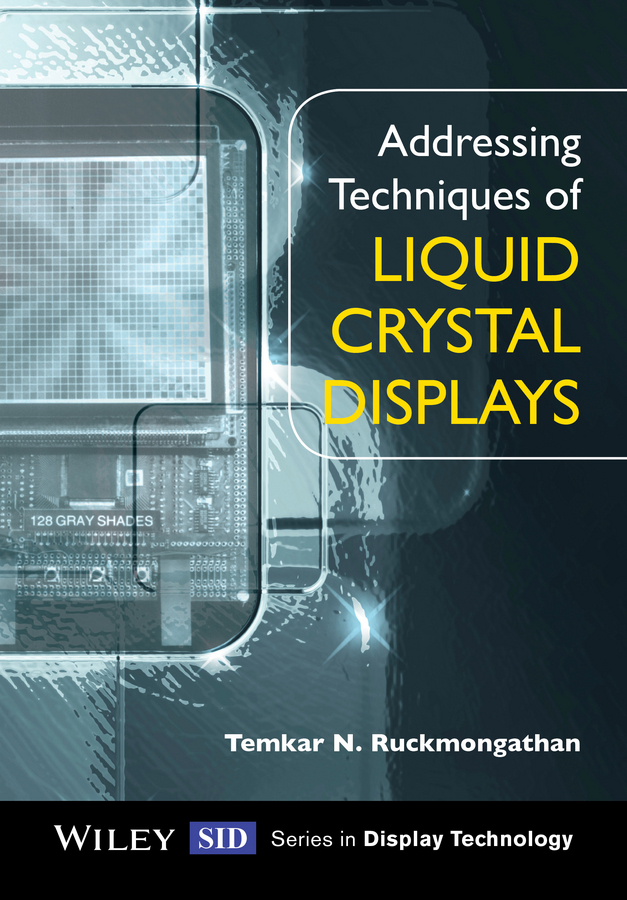Электронная книга: Temkar Ruckmongathan N. «Addressing Techniques of Liquid Crystal Displays»

|
Unique reference source that can be used from the beginning to end of a design project to aid choosing an appropriate LCD addressing technique for a given application This book will be aimed at design engineers who are likely to embed LCD drivers and controllers in many systems including systems on chip. Such designers face the challenge of making the right choice of an addressing technique that will serve them with best performance at minimal cost and complexity. Readers will be able to learn about various methods available for driving matrix LCDs and the comparisons at the end of each chapter will aid readers to make an informed design choice. The book will address the various driving techniques related to LCDs. Due to the non-linear response of the liquid crystal to external voltages, different driving methods such as passive and active matrix driving can be utilized. The associated theoretical basis of these driving techniques is introduced, and this theoretical analysis is supplemented by information on the implementation of drivers and controllers to link the theory to practice. Written by an experienced research scientist with over 30 years in R&D in this field. Acts as an exhaustive review and comparison of techniques developed for passive-matrix addressing of twisted nematic and super-twisted nematic (STN) LCDs. Discusses the trend towards«High Definition» displays and that a hybrid approach to drive matrix LCDs (combination of active and passive matrix addressing) will be the future of LCD addressing. Contains the author’s recent work on Bit-Slice Addressing that is useful for fast responding LCDs, as well as a chapter on driving ferroelectric LCDs Provides an objective comparison that will enable designers to make an informed choice of an addressing technique for a specific application. Includes examples of the practical applications of addressing techniques. Organised in a way that each chapter can be read independently;with the basic knowledge and historical background gained from the introductory chapters, adequate for understanding the techniques that are presented in the remaining chapters making it a self-contained reference. Издательство: "John Wiley&Sons Limited"
ISBN: 9781118706381 электронная книга Купить за 10810.32 руб и скачать на Litres |
Другие книги схожей тематики:
| Автор | Книга | Описание | Год | Цена | Тип книги |
|---|
См. также в других словарях:
Liquid crystal display — LCD redirects here. For other uses, see LCD (disambiguation). Reflective twisted nematic liquid crystal display. Polarizing filter film with a vertical axis to polarize light as it enters. Glass substrate with ITO electrodes. The shapes of these… … Wikipedia
Liquid crystal display television — Liquid crystal display televisions (LCD TV) are television sets that use LCD technology to produce images. Benefits of LCD technology include lower weight and reduced power requirements when compared to other display types. Often, LCD television… … Wikipedia
computer — computerlike, adj. /keuhm pyooh teuhr/, n. 1. Also called processor. an electronic device designed to accept data, perform prescribed mathematical and logical operations at high speed, and display the results of these operations. Cf. analog… … Universalium
Organic light-emitting diode — Demonstration of a flexible OLED device A green emitting OLED device An … Wikipedia
space exploration — Investigation of the universe beyond Earth s atmosphere by means of manned and unmanned spacecraft. Study of the use of rockets for spaceflight began early in the 20th century. Germany s research on rocket propulsion in the 1930s led to… … Universalium
Plasmatron — For other uses, see Plasma torch. The Plasmatron, or technically plasma addressed liquid crystal (PALC) is a color television display technology developed by Tektronix and Sony in the 1990s. PALC displays combine rows formed from liquid crystals… … Wikipedia
